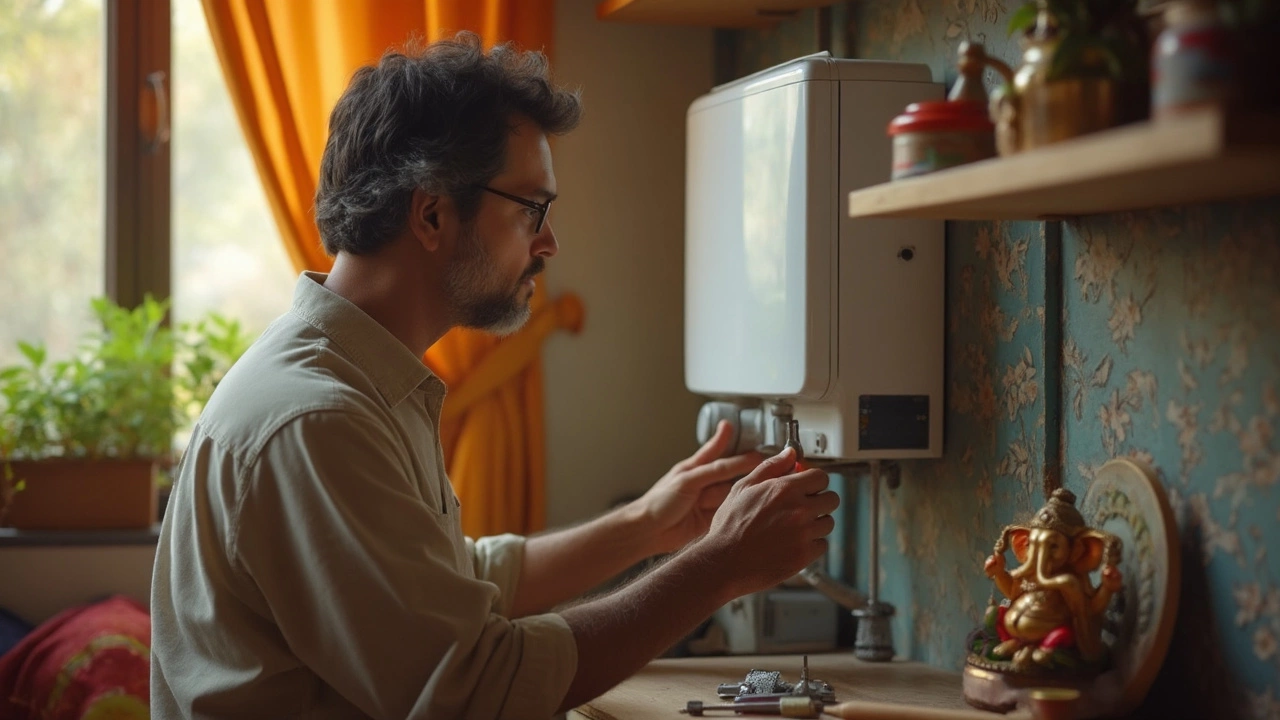Stuck choosing between Rheem and AO Smith for your next water heater? This article breaks down how these two big brands stack up in real-life situations—from reliability and repair costs, to warranties and energy efficiency. Learn which brand takes the lead on lasting hot showers and which one goes easy on your wallet. Packed with practical tips and honest insights, you'll finally get clear answers based on real experiences—not just sales pitches. Discover everything you wish you knew before buying or repairing your water heater.
Water Heater Tips You Can Use Today
Got cold showers out of the blue? Most water‑heater woes are fixable without calling a pro. A few quick checks and regular care can keep your heater humming for years. Below you’ll find the most useful tricks to spot trouble early, do simple repairs, and stretch the life of your system.
Spot the Signs Before They Turn Bad
First, learn the warning lights. If you hear strange popping, notice rust‑colored water, or see a sudden drop in temperature, those are clues that something’s off. A leaking tank usually means a faulty valve or a corroded tank – both need attention before water damage spreads. Also, watch the pressure‑relief valve; it should release a little steam when you press it. If it constantly drips, the tank may be over‑pressurized.
Another easy sign is the age of the heater. Most electric or gas units last 8‑12 years. If yours is past that range, start budgeting for a replacement even if it still works. Early planning avoids the panic of a sudden breakdown during winter.
DIY Checks and Quick Fixes
Start with the power source. For electric heaters, turn off the breaker, then check the thermostat settings. A setting below 120°F often feels like no hot water. Raise it a few degrees and see if the water warms up faster. For gas heaters, confirm the pilot light is lit; a flickering flame can cause erratic heating.
Next, flush the tank to remove sediment. Sediment builds up at the bottom, making the heating element work harder and shortening the heater’s life. To flush, shut off water and power/gas, attach a garden hose to the drain valve, open the valve, and let the water run until it’s clear. Close the valve, refill, and turn the power back on.
If you have a leak at the top near the temperature‑pressure valve, replace the valve. It’s a cheap part and a quick swap – just unscrew the old one, wrap Teflon tape on the threads, and screw in the new valve. Make sure the heater is fully depressurized before doing this.
When the water runs cold after a few minutes, the heating element may be failing. For electric heaters, you can test the element with a multimeter. No continuity means you need a new element. Most hardware stores carry universal replacements and a simple guide shows you how to disconnect the old part and bolt in the new one.
Finally, keep the area around the heater clear. Storing boxes or coats can block ventilation, causing the unit to overheat and shut down. Give it at least a foot of clearance on all sides.
By doing these checks once a year, you’ll catch most problems before they turn into costly repairs. And if a repair seems beyond your comfort zone, you now know exactly what to tell a technician – which saves time and money.
Fixing a hot water heater can vary widely depending on the issue at hand, from quick fixes like resetting the thermostat to more complex tasks that require parts replacement. This guide explores typical repair scenarios, offering realistic time frames for each, alongside practical tips to troubleshoot common problems. We also highlight when it might be safer and more cost-effective to call in a professional plumber. Knowing these details can save homeowners time and stress, while also ensuring they get that hot water running again efficiently.

